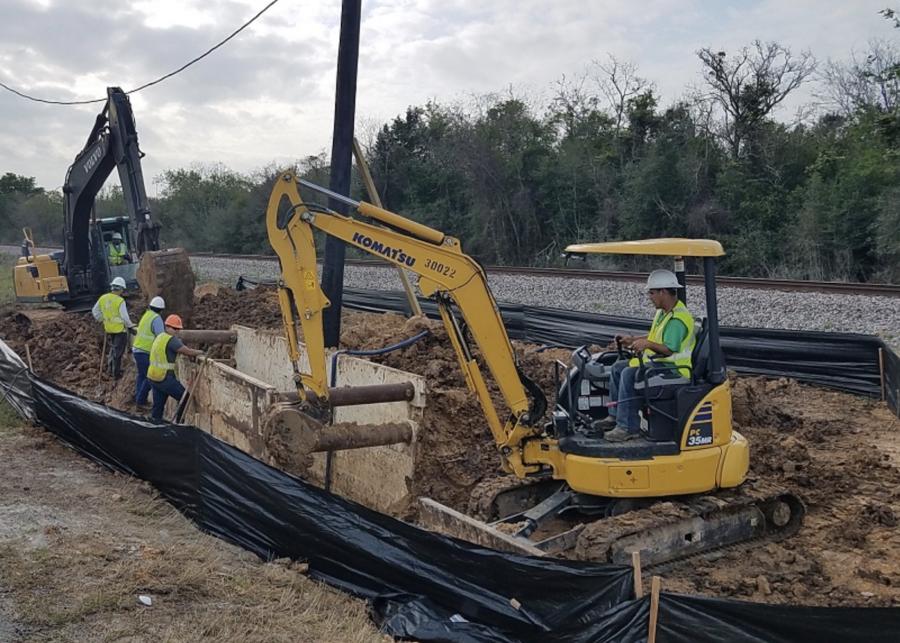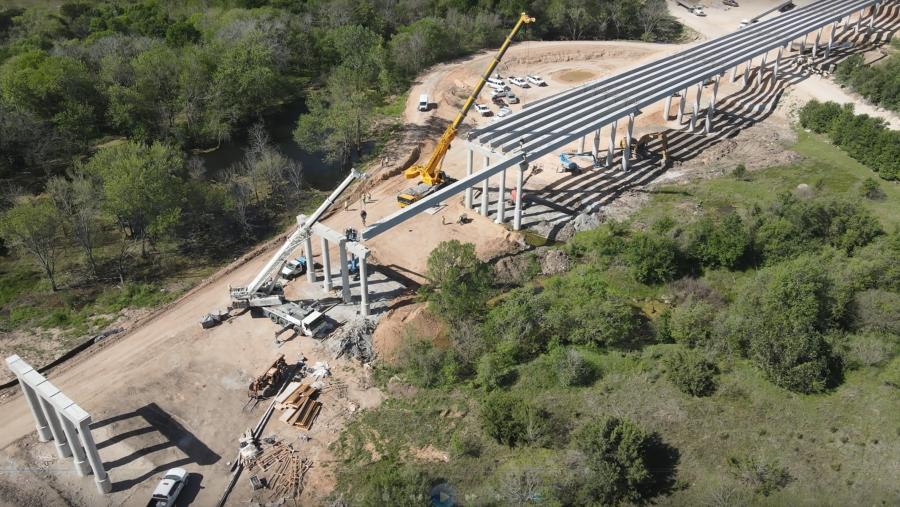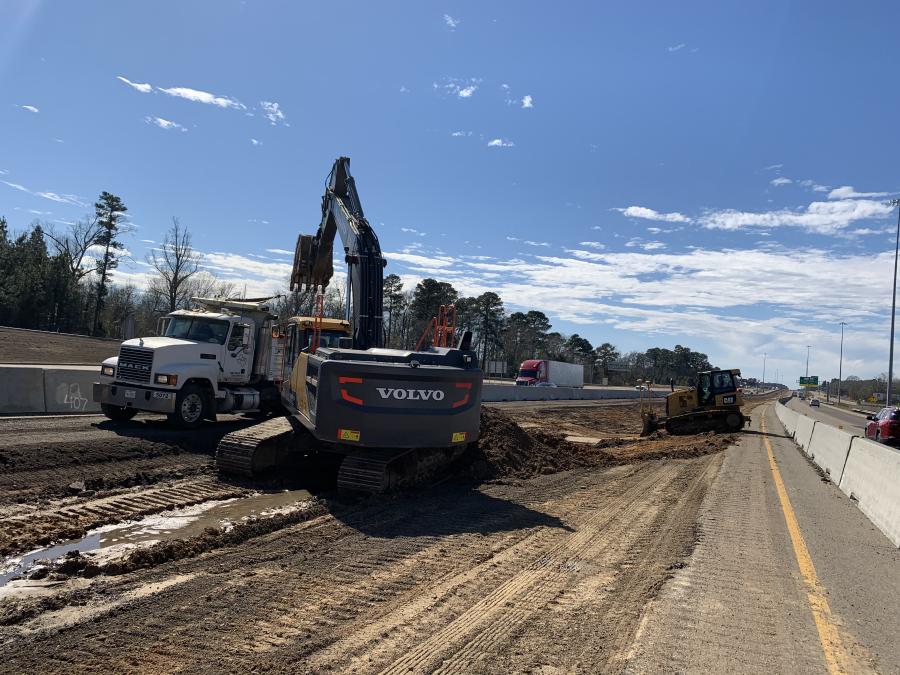Photo courtesy of TxDOT
The Texas Transportation Commission (TTC) recently approved $648 million for 52 highway improvements and other transportation facility projects, like the I-30 reconstruction in Texarkana,
which is expected to be completed later this year.
With increasing budgets for transportation and infrastructure projects, the Texas Transportation Commission (TTC) continues to issue new announcements for construction projects to expand and upgrade the state's transportation infrastructures which is being expanded as more and more people and businesses flock to Texas.

Photo courtesy of TxDOT
The TTC approved a considerable number of projects, worth more than $750 million.
The approval included:
- Approximately $648 million for 52 highway improvements and other transportation facility projects;
- Approximately $89 million for 63 routine maintenance projects;
- A total of $5.9 million for five capital improvement projects for airport development and improvement;
- A total of $10.8 million State Infrastructure Bank loan to Sardis Lone Elm Water Supply Company for utility relocation near FM 664 in Ellis County.
These projects will provide a considerable amount of work for small, medium and large-sized general contractors and subcontracting firms.
The state's energy sector is also being upgraded and expanded. The Inside Scoop report highlighted TxDOT's ongoing efforts in the state's energy producing regions. Increases in funding have allowed TxDOT to plan for more transportation projects.
"Prior to 2017, the 10-year plan Unified Transportation Program did not exceed $40 billion," said Laura Butterbrod, a TXDOT PIO. "Today, the 2024 UTP totals more than $100 billion. Of that, $22.6 billion will go to fund transportation projects in the energy producing areas of Texas. Safety improvements will include additional passing lanes on two-lane highways, bridge enhancements, road widening and rehabilitating interchanges. The energy sector is vital to not only the Texas economy, but also the nation. Texas is number one in energy production. While challenges remain with safety, congestion and roadway preservation, TxDOT has been and will continue to respond to the needs of the energy sector and the citizens of Texas."
South Padre Island
In last December's Inside Scoop: Texas Transportation Commission, a monthly report issued by the Texas Department of Transportation (TxDOT), it was noted that the second South Padre Island causeway project is moving forward in development as the TTC added the future roadway — SH 104 — to the state highway system. The designation provides for additional funding sources to accelerate the development and construction of the new bridge and roadway to be built between FM 106 and Park Road 100 on South Padre Island.
This is approval is crucial as it sets in motion the process of providing between $700 and $1 billion dollars to construct the causeway.

Photo courtesy of TxDOT
"The commission action [on December 17] was an important first step for the planning, development and construction of the second causeway project," said Texas Transportation Commissioner Alex Meade. "Like other projects around the state, if the second causeway project moves forward after the environmental review process, it will require a significant partnership between TxDOT and local entities, including the CCRMA and the Rio Grande Valley MPO. Local partners will need to participate in providing significant local funding along with TxDOT funding to fund this project."
Cameron County and the TxDOT Pharr District requested the designation, with both entities continuously prioritizing the construction of a second causeway, which in addition to improving traffic flow, would also he very helpful in terms of hurricane evacuations and emergency operations.
"I want to personally thank Governor Abbott, TxDOT Chairman Bruce Bugg and the members of the Transportation Commission along with TxDOT administration, our own Pharr District Office and the entire Rio Grande Valley delegation in Austin for supporting the transition of the SPI 2nd Causeway project onto a TxDOT On-System project," said Cameron County Judge Eddie Treviño, Jr.
TxDOT is the reviewing agency for the environmental document being prepared by the Cameron County Regional Mobility Authority (CCRMA). Environmental clearance is expected by fall of 2026, with construction possibly starting as early as 2029.
The existing Queen Isabella Memorial Causeway, built in 1971, is the sole roadway connecting South Padre Island to Port Isabel.
Back in September 2001, the causeway partially collapsed after being struck by a barge.
Ray Pedraza, a public information officer of TxDOT's Pharr District, explained that the project's cost will vary based on the ultimate design and letting date.

Photo courtesy of TxDOT
"The best estimate is $700 million to $1 billion," he said. "Key elements include environmental considerations, bridge structures and landing locations on both mainland and San Padre Island. The work will take approximately three years once construction starts."
Environmental concerns have to hammered out in terms of construction.
"Coordination with various state and federal resource agencies will be required," said Pedraza. "Seagrass, endangered animal species and human factors are some examples."
The causeway will have four lanes and be able to handle 40,000 vehicles daily.
"However, these thresholds are often passed once construction is complete," said Pesraza. "Level of service (congestion levels) break down after that."
In regards to the future of the existing causeway, Pedraza replied: "We will continue to maintain and evaluate the Queen Isabella Memorial Causeway in the future for possible replacement." CEG
Irwin Rapoport
A journalist who started his career at a weekly community newspaper, Irwin Rapoport has written about construction and architecture for more than 15 years, as well as a variety of other subjects, such as recycling, environmental issues, business supply chains, property development, pulp and paper, agriculture, solar power and energy, and education. Getting the story right and illustrating the hard work and professionalism that goes into completing road, bridge, and building projects is important to him. A key element of his construction articles is to provide readers with an opportunity to see how general contractors and departments of transportation complete their projects and address challenges so that lessons learned can be shared with a wider audience.
Rapoport has a BA in History and a Minor in Political Science from Concordia University. His hobbies include hiking, birding, cycling, reading, going to concerts and plays, hanging out with friends and family, and architecture. He is keen to one day write an MA thesis on military and economic planning by the Great Powers prior to the start of the First World War.
Read more from Irwin Rapoport here.
Today's top stories




















